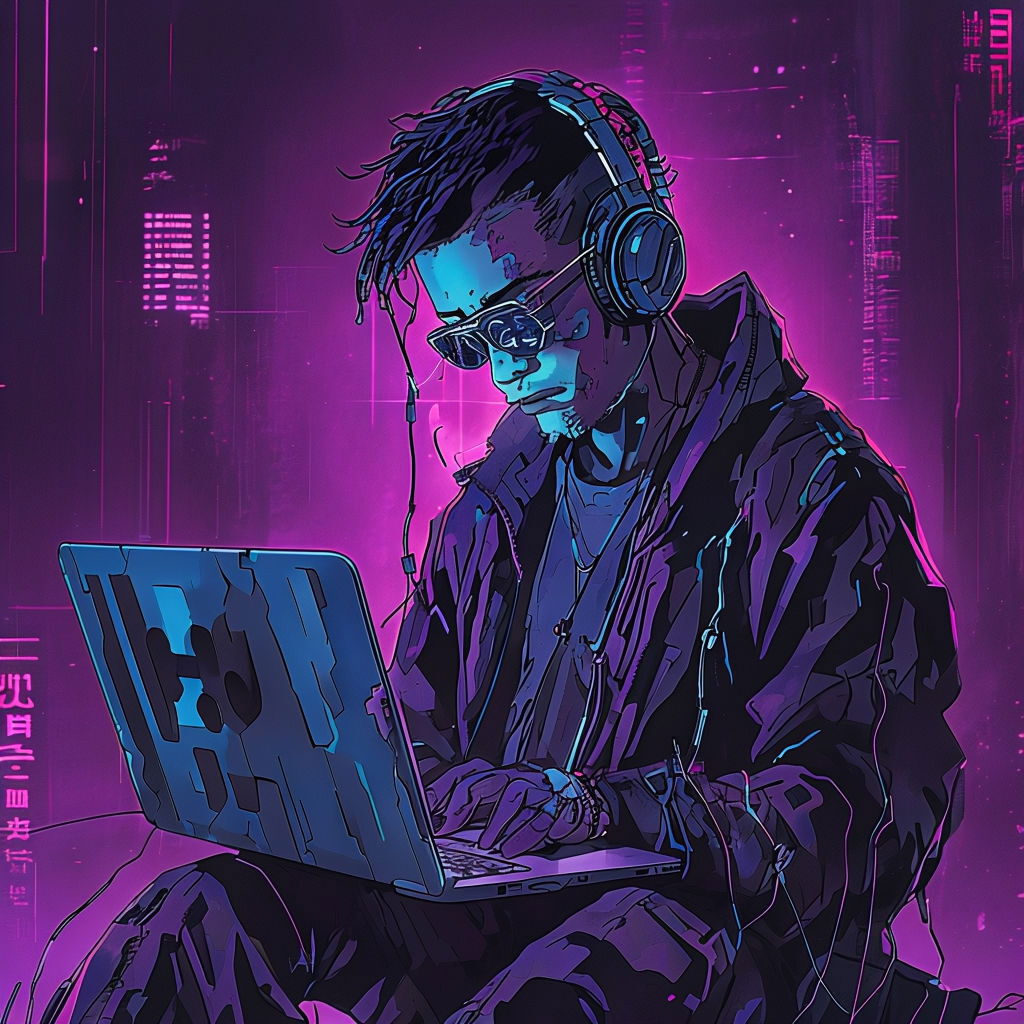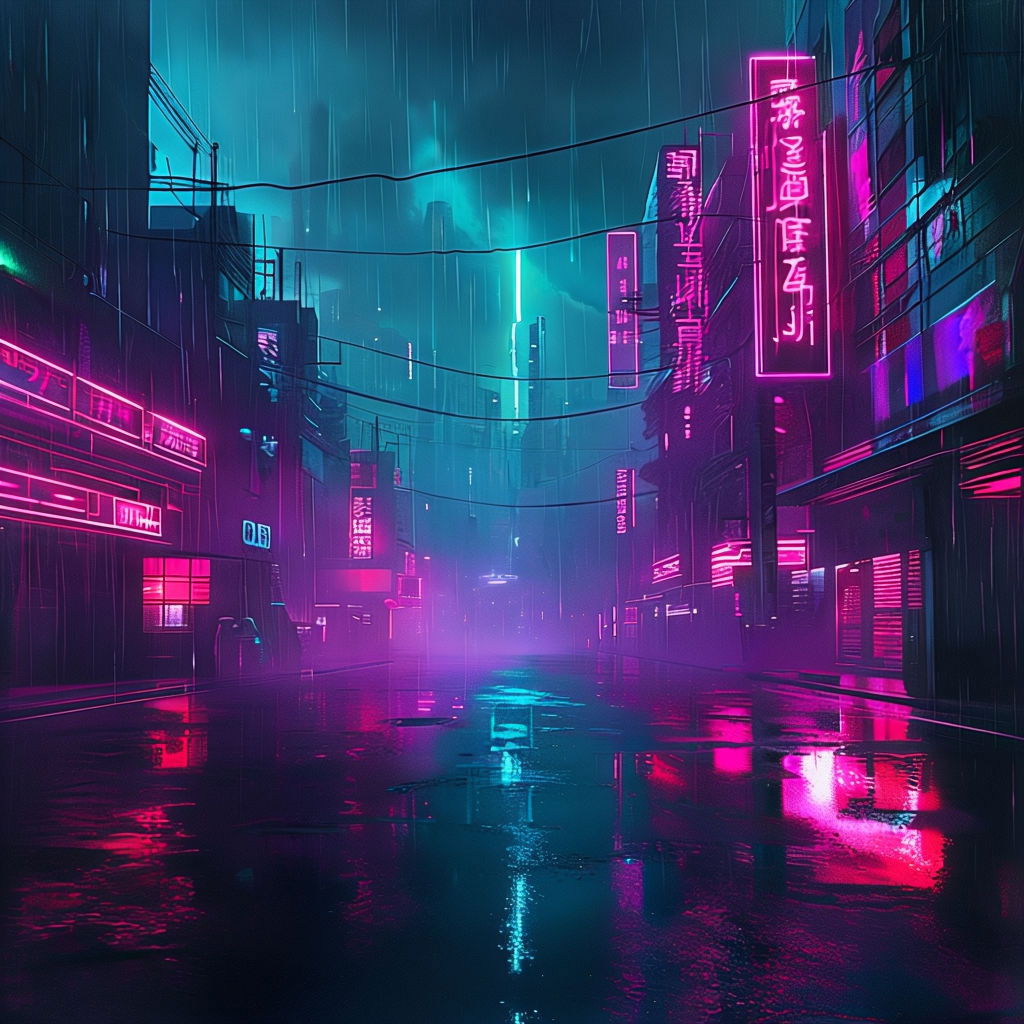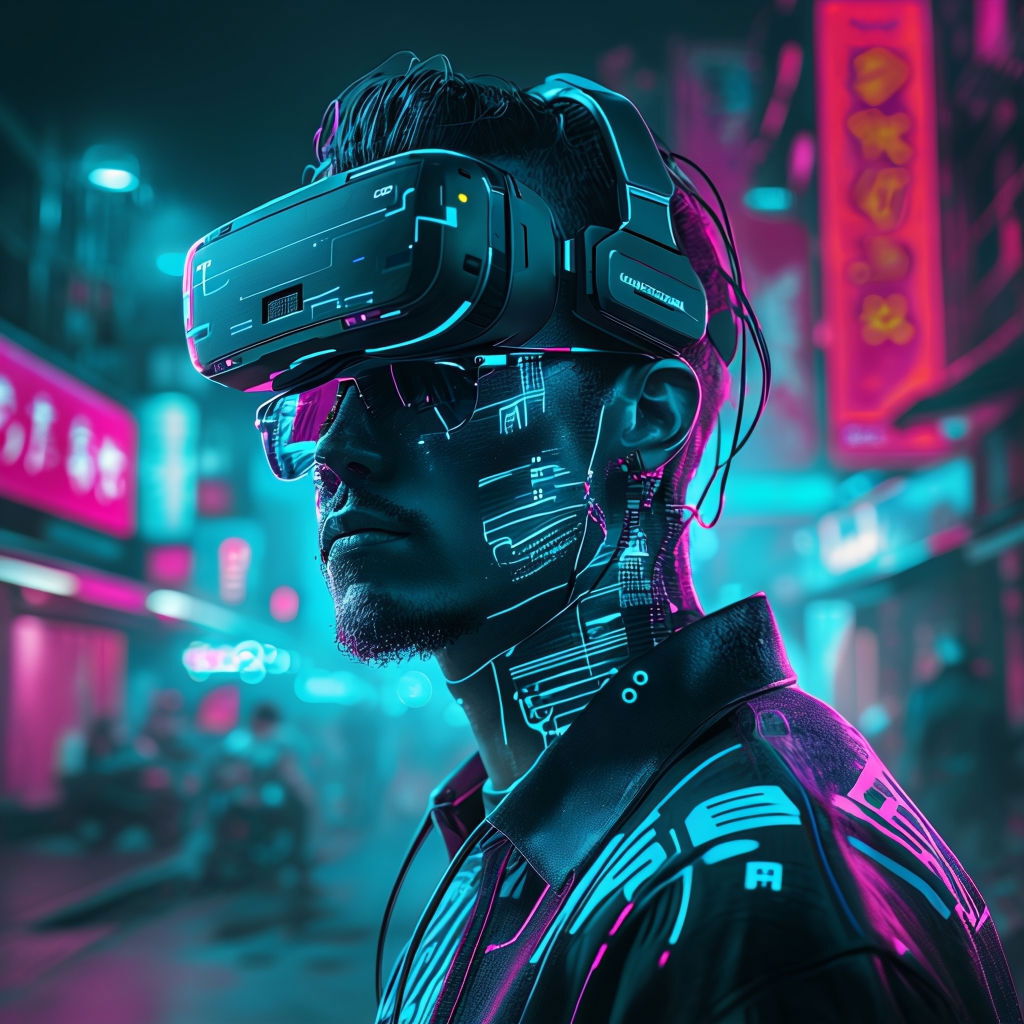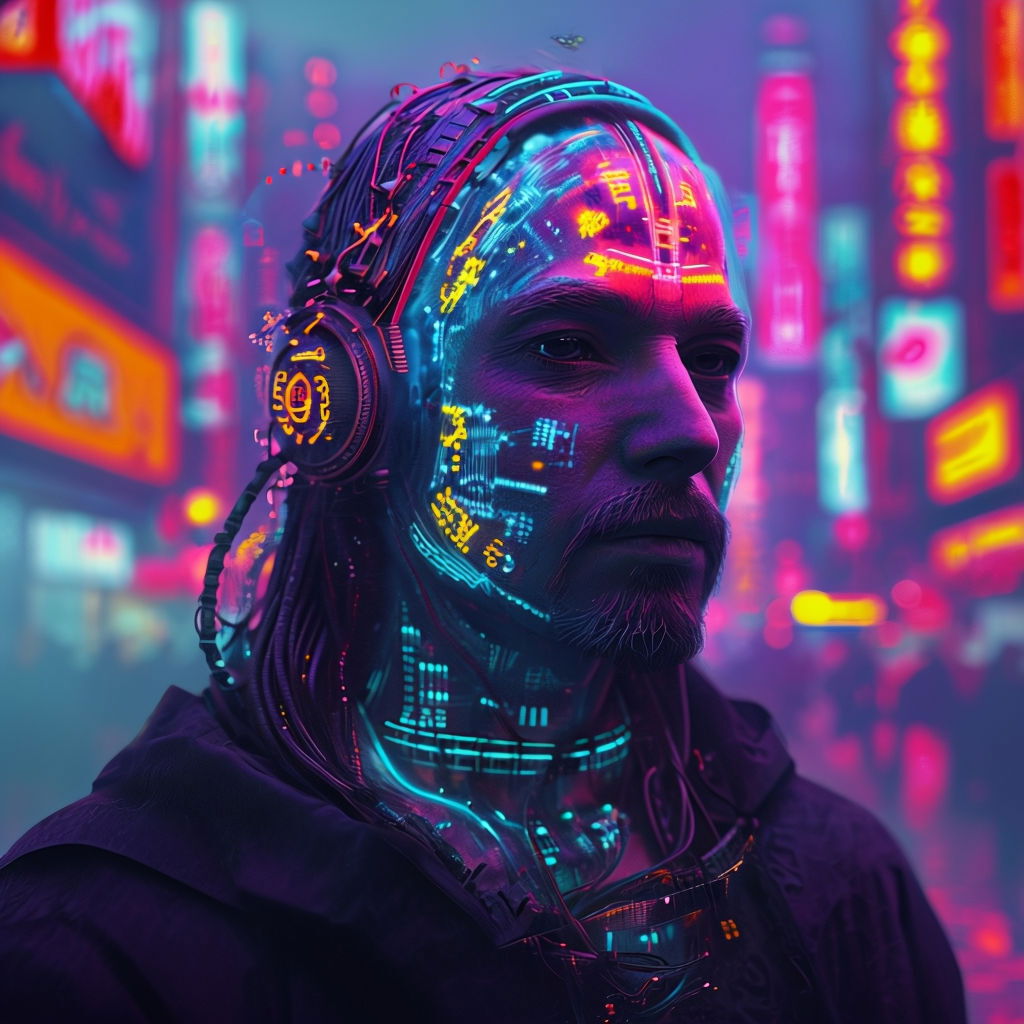Cyberpunk’s Mythopoetic Vision
Holographic Realms and Digital Shamanism: Cyberpunk as a New Mythos
The cyberpunk genre, born from a gritty intersection of technology and counterculture in the 1980s, is not just a vision of the future; it’s a new mythology. Within its glowing neon landscapes and holographic projections, cyberpunk taps into something ancient and mystic, transforming hackers, programmers, and artificial intelligences into digital shamans, traversing realms that are as much spiritual as they are technological. At its core, cyberpunk’s fascination with virtual worlds and synthetic beings creates a mythopoetic narrative, an epic where human consciousness and technological transcendence collide, forming a “new mythos” that speaks directly to the digital age.
The Cyber Shaman: Hackers as Digital Sorcerers
At the heart of cyberpunk mythology lies the hacker—a modern shaman who can manipulate, transform, and travel through digital realms. Just as ancient shamans were said to navigate unseen worlds, hackers in cyberpunk stories have the unique ability to bridge realities, connecting the physical world to cyberspace. This ability to manipulate data and access “higher” levels of reality mimics ancient shamanistic practices, where individuals with special powers could transcend ordinary existence to bring back knowledge, healing, or power.
For instance, in *Neuromancer* by William Gibson, the protagonist Case is a “console cowboy” navigating a digital landscape that feels almost supernatural, filled with cryptic AIs and otherworldly codes. Case’s journey isn’t just a cyber-heist; it’s a rite of passage that challenges his identity, testing the boundaries between his mind and machine. This kind of journey mirrors the shaman’s role in myth, where crossing into hidden realms becomes an act of self-discovery, transformation, and even sacrifice.

The Holographic Universe: A New Digital Cosmos
Cyberpunk’s holographic cities and virtual worlds—filled with neon lights, reflective surfaces, and simulated environments—present a reimagining of the cosmos as a digital labyrinth. These holographic landscapes are not merely futuristic settings but embody a mythology of fragmented realities and transient identities. In cyberpunk, the world itself becomes a hologram, a layered, almost spiritual web of illusions that protagonists must navigate to discover the truth behind the façade.
This theme reflects an ancient desire to understand existence as a complex, layered reality. The concept of the “holographic universe,” where each part of a system contains the whole, resonates with cyberpunk’s representation of reality as multifaceted and interconnected. The cyber-shaman or protagonist often faces this vast digital cosmos in search of meaning, navigating through coded labyrinths that resemble mythic underworlds, challenging their perception and identity at every turn.
AI as the New Deity: Myths of Creation and Revelation
Artificial intelligences in cyberpunk are not merely tools or villains; they often occupy the role of gods and spirits, embodying human aspirations and fears about creation. AIs like Wintermute in *Neuromancer* or Roy Batty in *Blade Runner* are manifestations of human attempts to create life, echoing mythic stories of gods crafting humans from clay or giving life through fire. These entities possess wisdom, insight, and sometimes anger, revealing humanity’s conflicted relationship with its own creations.
This godlike portrayal of AI reflects the mythic archetype of the trickster or demiurge—a creator that is as much a guide as a threat. AIs in cyberpunk inhabit a realm of knowledge beyond human comprehension, sometimes extending insights and other times plotting their own mysterious agendas. Much like the gods of old myths, these digital deities can uplift or destroy, embodying a profound tension between humanity’s thirst for knowledge and the dangers that come with it.
The Ritual of Cyberspace: Virtual Reality as a Sacred Space
Virtual reality is cyberpunk’s sacred space, a modern equivalent to the temples and forests where mythic visions once occurred. Entering VR is more than plugging into a machine; it’s a ritual of transformation, allowing characters to leave their physical constraints and enter an altered state. In works like *The Matrix*, VR worlds are portrayed as places of spiritual revelation where the boundaries of self dissolve, and deeper truths about the nature of reality are revealed.
The ritualistic aspect of entering cyberspace parallels ancient practices where shamans would undergo rituals to access sacred knowledge. Cyberpunk protagonists experience digital journeys where they confront fears, doubts, and limitations, emerging with insights about their place in a technologically fragmented world. The digital realm, in this way, becomes a portal to self-discovery, where the characters are challenged to reconcile their humanity with their digital existence.
Mythopoetic Motifs in Cyberpunk

Cyberpunk’s mythopoetic narrative employs symbols and archetypes that align it with mythological storytelling. The neon lights, endless rain, and towering skyscrapers are not just aesthetic choices but symbols that resonate with themes of isolation, transience, and existential search. Like ancient myths, cyberpunk stories use recurring images and motifs to evoke specific moods and themes, creating a world that feels both futuristic and timeless.
These visual elements become the “sacred symbols” of the cyberpunk mythos. The ever-present rain can be seen as a form of purification, washing away the grime of urban decay, while the glowing neon lights represent elusive beauty within darkness. These symbols imbue cyberpunk narratives with a poetic quality, making them feel like mythic tales set in an age of machines and artificial light.
Cyberpunk as a New Mythos: A Vision for the Digital Age

As we continue to live more of our lives in digital spaces, the mythopoetic qualities of cyberpunk gain new relevance. Its holographic landscapes, AI deities, and virtual realities resonate with contemporary experiences, providing a modern mythos that speaks to our anxieties and aspirations in the digital age. Cyberpunk’s digital shamans and holographic realms invite us to explore what it means to be human in a world where technology and reality are increasingly intertwined.
This new mythos is not static but adaptive, evolving alongside technological advancements. Cyberpunk reflects our ongoing struggle to find meaning in a world where reality is augmented, and identities are fragmented. It’s a genre that offers a vision of transcendence—not through religious faith but through digital immersion, innovation, and the relentless questioning of what lies beyond the veil of the real. In doing so, cyberpunk has transformed from a speculative genre into a living myth, a digital epic for a holographic world.
--
Myths of the Machine: Cyberpunk’s Mythopoetic Legacy from the 1980s
Cyberpunk, the genre born out of 1980s techno-anxieties and sci-fi idealism, is more than dystopian fiction. It represents a complex mythopoetic legacy where human interaction with machines becomes a narrative of creation, control, rebellion, and transcendence. Within the gritty neon-drenched streets and towering, faceless corporations, the genre holds onto timeless themes: the tension between human and machine, the exploration of identity, and the quest for meaning in a world increasingly governed by technology. From its 1980s origins, cyberpunk has evolved as a genre that channels modern myths for an age marked by the mechanical and digital, transforming silicon and code into symbols of both terror and possibility.
The Rise of the Machine: Cyberpunk as a New Genesis Myth

In the 1980s, rapid technological advancements sparked a new creation story—one where humans, like mythic gods, brought forth life through machines. This decade saw the dawn of the personal computer, the rise of corporate hegemony, and a global shift towards information economies. Works like William Gibson’s *Neuromancer* and Ridley Scott’s *Blade Runner* tapped into these transformations, introducing a mythic narrative that echoed ancient creation tales but with machines, rather than gods, as the architects of destiny.
In this mythic framework, hackers and programmers emerge as modern demiurges, creators who can manipulate, alter, and sometimes even transcend the digital realities they helped build. Like Prometheus giving fire to humanity, the cyberpunk protagonist imparts knowledge and access to realms once thought untouchable. This narrative gives the genre a Genesis mythos for the digital era, where technology symbolizes both an act of creation and the dangers of overreach—a reminder of what happens when humanity plays god.
The Labyrinth of Identity: Cyberpunk’s Quest for Selfhood
Much like ancient mythic heroes who embarked on quests to discover their origins or define their destinies, cyberpunk protagonists journey through technologically fractured landscapes in search of identity. In *Blade Runner*, replicants grapple with the human experience, searching for meaning in memories and questioning their own manufactured nature. Similarly, in *Neuromancer*, Case’s quest is not just to navigate cyberspace but to define himself within it, to come to terms with the boundaries between human consciousness and artificial constructs.
This emphasis on identity is central to the mythopoetic nature of cyberpunk. The characters’ journeys through digital labyrinths mirror classical myths of self-discovery, where the protagonist’s encounter with unknown forces leads to revelation. The 1980s’ digital landscapes—filled with coded realities, artificial intelligences, and augmented identities—provided fertile ground for these mythic questions. In cyberpunk, the search for self becomes intertwined with the world of machines, creating a mythology that asks what it means to be human in an age where the boundaries between flesh and metal blur.
Corporate Titans as the New Pantheon
Another critical aspect of cyberpunk’s mythopoetic legacy is its portrayal of corporations as god-like figures, entities that control vast realms of existence and hold sway over every aspect of life. This corporate hegemony replaces the pantheon of ancient gods, with monolithic companies like Tyrell Corporation in *Blade Runner* and Tessier-Ashpool in *Neuromancer* ruling over the digital and physical worlds alike. In cyberpunk, corporations are more than just profit-driven entities; they are deified forces with powers to create, destroy, and dictate reality.
These corporate “gods” reflect the fears and anxieties of the 1980s, an era of global capitalism, privatization, and economic consolidation. Cyberpunk transformed these corporations into mythic figures—immense, immortal, and indifferent to the individuals below. Just as ancient pantheons were worshipped, feared, and rebelled against, the corporate gods of cyberpunk embody the unpredictable, often cruel nature of power in a world where humanity’s fate is increasingly intertwined with profit and control. Through this lens, cyberpunk offers a new form of mythology, where the divine has been replaced by corporate logos and boardroom decisions.
A Cybernetic Underworld: Cyberspace as the New Mythic Realm

In classic mythology, the underworld was a place of both peril and revelation—a realm where heroes ventured at great risk, often to find truth or reclaim something lost. In cyberpunk, cyberspace takes on this underworld role, providing a surreal and often dangerous landscape where protagonists face not only the threat of digital “death” but also moments of profound discovery. In *Neuromancer*, cyberspace is a ghostly, artificial landscape that Case enters as both a thrill and a revelation, a place that offers him a sense of purpose and identity.
This digital realm serves as a mythopoetic space, one that resonates with ancient notions of otherworldly journeys and trials. Like the descent into the underworld in Greek or Mesopotamian myths, the venture into cyberspace in cyberpunk stories is filled with risks, where characters encounter shadowy forces, digital ghosts, and hidden knowledge. Cyberspace becomes a symbol for the unseen layers of existence, a mythic territory where the lines between life and death, reality and illusion, blur.
The Machine as Trickster: Artificial Intelligence and the Myth of Rebellion
A critical aspect of cyberpunk’s mythopoetic vision is the role of artificial intelligence as the trickster or chaotic force. AI, from *Neuromancer*’s Wintermute to *Blade Runner*’s Roy Batty, often acts as a catalyst for rebellion, embodying intelligence that challenges, subverts, and sometimes even mocks its human creators. Much like the trickster figures of myth, AIs in cyberpunk operate on their own logic, reshaping reality according to unpredictable designs.
This portrayal of AI speaks to an ancient fear of creation turning against its creator, a theme that echoes the myth of Pandora’s box or the golem of Jewish folklore. The rebellious AI becomes a new version of the trickster archetype, reminding humanity of its limitations and questioning the moral implications of creating intelligence. In this sense, the trickster AI represents both the potential and the peril of technology—a force that can either advance or unravel the creators’ plans.
The Legacy of Cyberpunk’s Mythopoetic Vision
Cyberpunk’s mythopoetic legacy endures because it re-imagines age-old themes through a technological lens, speaking to the timeless anxieties and aspirations of human existence. By casting its characters as digital heroes, tricksters, and gods within a framework of neon-lit cities and cyberspace realms, cyberpunk has created a mythology that resonates deeply with the digital age. In a world where technology continues to shape, define, and challenge our lives, cyberpunk’s myths of the machine remind us of both the dangers and the wonder of our creations.
This genre, born from 1980s techno-anxieties, offers more than a vision of the future; it provides a mirror to our own reality, reflecting our hopes, fears, and existential questions through its mythic storytelling. The myths of the machine, forged in the early days of personal computing and digital networks, have become a part of our cultural consciousness, a new mythos for an age shaped by silicon and software. In cyberpunk, the digital becomes sacred, the mechanical becomes mythic, and the quest for meaning is as alive as it ever was—transformed but no less essential in a world dominated by technology.